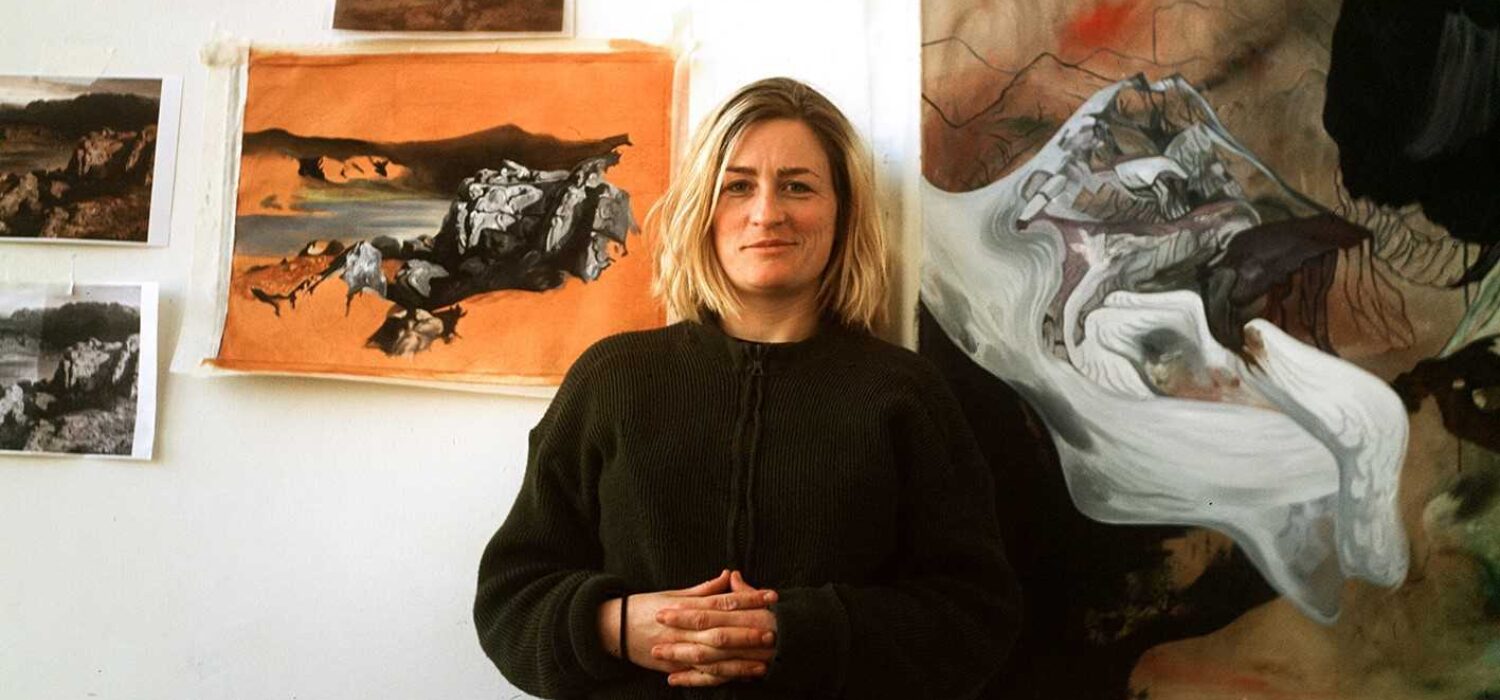Artist Maiken Stene
The Artist
Maiken Stene is a visual artist from Sokndal, Norway’s largest mining municipality. She has an art education from Malmö and New York but has now returned home after several years abroad. The main theme in Maiken’s artistry is how we humans relate to and understand the nature that surrounds us. She often uses painting as her language and medium, and she frequently creates immersive and interactive installations. In her art, Maiken engages with both art historical traditions and geological science. The result is an analytical approach to the landscape that can inspire us to understand both nature and ourselves in new ways.
About the Art
Maiken’s work addresses the transitional period between the nature-based society that existed before the city was formed and the urban structures and belief systems that developed throughout the 13th century. The paradox in all this is that the symbols we surround ourselves with and bring into the city are made from the very nature we eradicate to make room for our civilised life.
Maiken’s installation is twofold, offering different experiences depending on which direction you enter the room from. From one side of the room, you stand in the midst of a fragile primeval forest made of paper, looking towards a dimly lit display case containing a rough willow tree trunk. As you move further and turn around, you encounter the peculiar gaze of the Årdal crucifix, now framed by geometrically composed lines pointing towards civilisation and the construction of the cathedral—the beginning of Stavanger’s history.
For Maiken, the work is a painterly play where different materials can represent various properties, functions, or ideas: the crucifix is made of wood, the forest is made of paper, the baptismal font and the head are made of stone, and our bodies are made of bone, blood, and flesh that rot and return to the earth.
Maiken has chosen to name her work Hagl, after the rune of the same name. The hail is a hard and crushing ice pellet that lashes down to the earth, destroying everything it hits. But then it melts and becomes liquid, nutrient-rich water that allows new life to sprout from the ground.
